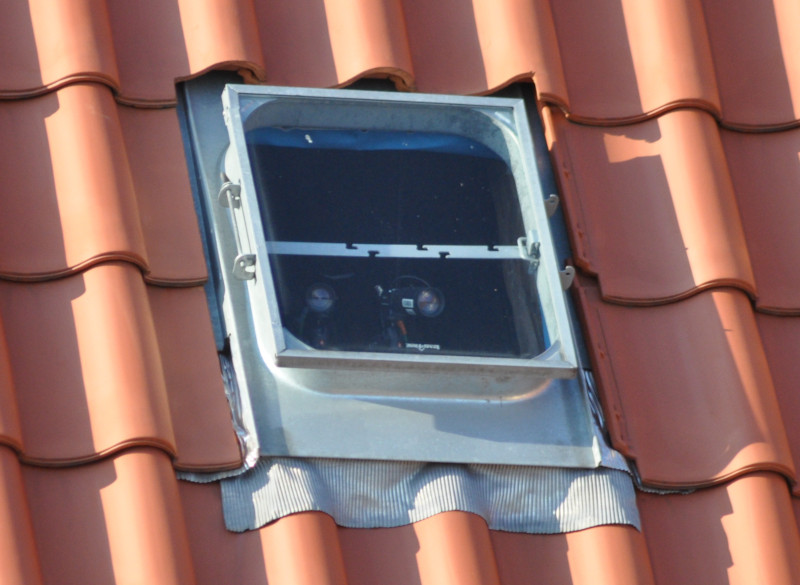
A camera found in the skylight of a public school in Berlin, Germany, in July 2011.
Covert video surveillance devices are electronic devices, typically cameras, hidden by an adversary to collect video data.
An adversary can hide covert video surveillance devices anywhere with a line of sight to the target or area under surveillance. Notable locations include:
- The living room of a target.
- The windows of a building close to the home of a target, with a line of sight on the entrance of the home.
- Close to stash spots or safe houses as has happened in Italy, where motion-activated hunting cameras were installed to monitor a forest stash spot[1].
Captured images can be used as evidence in court. Non-incriminating, mundane images can reveal a lot about the targets of surveillance and help in network mapping.
See Ears and Eyes and the hidden devices topic.
Used in tactics: Incrimination
Mitigations
| Name | Description |
|---|---|
| Bug search | With the proper techniques and tools, you can locate hidden cameras, and eventually remove them. |
| Digital best practices | Hidden cameras can film a computer or phone screen, or a computer keyboard. When using a computer or phone for sensitive activities, keep the device facing a wall that can be thoroughly searched for hidden cameras (rather than a window or TV, for example). |
| Physical intrusion detection | Installing hidden cameras in a space often requires an adversary to covertly enter the space. With proper preparation, you can detect such a covert entry. |
| Stash spot or safe house | By keeping incriminating materials at a stash spot or safe house, you're not bringing them into your house, where hidden cameras are more likely to be present. |
| Surveillance detection | A specific passive surveillance detection technique can help you detect a surveillance vehicle parked near your home and equipped with a camera pointed at your home. This technique only works if you live in a place where there aren't too many different vehicles that park, that is, in some residential areas in cities and in most rural areas. Each time you leave or enter your home, you take note of all the vehicles parked on the street that have a line of sight to your home. Trying not to look suspicious, you note their model, color, and license plate number, either remembering the information or writing it down. After doing this for a while, you will become familiar with the “baseline” of vehicles that park on your street, which will be the vehicles of people who live nearby or their guests. Once you're familiar with the baseline, you'll be able to spot vehicles that are not part of that baseline and discreetly examine them to see if they are surveillance vehicles. |
Used in repressive operations
| Name | Description |
|---|---|
| Case against Boris | Cameras were installed in the streets outside Boris's home and outside the home of someone close to him to film the entrances to the homes[2]. |

